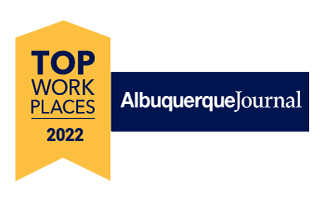
NMSBVI Vision Bees 2015
2015 Vision Bee
A Vision Bee is dedicated to imparting the latest information regarding teaching students who have visual impairments. A Vision Bee is appropriate for parents, families, teachers, service providers, social workers and anyone who is interested in increasing their skills in regards to serving students with visual impairments. The Vision Bees take place in January of each year in Albuquerque and Alamogordo. Registration is free. CEUs are available. You may register using the documents found on this webpage.
Upcoming
Vision Bee Dates
Vision Bee 2015 with David Brown:
January 14th 2015 in Albuquerque at the Marriott Pyramid (5151 San Francisco Road NE)
January 16th in Alamogordo at the Civic Center Auditorium (800 East First St.)
Information - 2015 Vision Bee
8:30am to 9:00am: Registration
9:00am to 4:00pm: Sessions (two short breaks and a lunch break in-between).
A more detailed Agenda will be sent out and posted prior to the event.
Light snacks will be provided.
Click the link below to see the handouts for the event and print them if you like. We will not have printed versions available at the event so please bring your copy or download them to your device. Thank you for your cooperation.
The Forgotten Sense – Proprioception
The Vestibular Sense
The Sense of Smell - The Olfactory System
The Importance of Having 'Good Taste'
The Sensory Integration Perspective (part 1)
The Sensory Integration Perspective (part 2)
CHARGE Syndrome ‘‘Behaviors’’: Challenges or Adaptations?
CHARGE association looking at the future — the voice of a family support group
CHARGE Association
CHARGE Accounts Newsletter Spring 2007
CVI and CHARGE
Stress – Good Cop or Bad Cop?
Deaf-Blindness, Self-Regulation, and Availability for Learning
Follow the Child – Approaches to Assessing the Functional Vision and Hearing of Young Children with Congenital Deaf-Blindness
Things to Remember When Requesting an Intervener for Your Child
‘Knowing the Child’ – Personal Passports
Minding the Difference: talking to individuals about their condition of CHARGE syndrome
Helping Children Want to Do Things: Identifying and Using Motivators
A Personal View of Changes in Deaf-Blind Population, Philosophy, and Needs
Resonance Boards
Self-Determination Is For Babies, Too!
Sensory Confusion
Utilizing the Sense of Smell in Children and Youth with Deaf-Blindness
Vision Issues for People with CHARGE Syndrome
What Does “Follow the Child” Mean?
“Why are children with CHARGE syndrome so lazy?”
Click image to view larger.
General Information
How and why we should interpret a child’s “Self-Stim” behaviors as a good thing
"When the phrase 'deaf-blind' is used to describe a child it obviously conveys the idea that there are difficulties with both vision and hearing. Unfortunately the phrase is misleading in two significant ways. First, it makes many people think that the child can't see anything and can't hear anything, but in fact, most children with deaf-blindness do have some useful vision and/or hearing, even if they themselves don't seem to be using it yet. Secondly, the majority of children with deaf-blindness today have significant medical issues which result in other sensory systems also not working properly, including perception of pain, smell, taste, touch, and balance, Because everyone of our senses is designed to develop and work simultaneously with all the others, a problem with one sense may result in problems with the functioning of other, apparently, unrelated, senses. Two of these 'other' senses, the proprioceptive sense and the vestibular sense, are particularly important but often ignored. Knowing about these senses, how they work, what might happen if they are not working properly, and what to do about it, can make a surprising difference to the development of functional vision and functional hearing. A consideration of the functions of ALL our senses can help us to understand why we self-stimulate, and also understand what any child's self-stimulation behaviors tell about their difficulties and needs. As a result of this perspective many behaviors that are generally thought of as 'bad' begin to be seen as actually quite smart adaptive responses. Sometimes accepting, or re-channeling, or even encouraging these behaviors can be much more helpful than merely trying to stop them. Close analysis of a child's self-stimulation behaviors can give me at least half of the information I need in my assessment.
Objectives
1. To develop a clearer focus on the identification and use of individualized motivators
2. To focus and organize observations in a more effective way
3. To adopt and develop a broader idea of what constitutes 'communication'
4. To utilize a child's current expressive behaviors in determining the best way forwards
5. To focus and organize on the total environment in facilitating communicative interactions.
About the Presenter
David Brown
Since entering the specialist area of deaf-blindness in 1983 David Brown has become a leading and well-published practitioner in the field. In his roles as Head of the Family Education and Advisory Service of SENSE (the National Deaf-Blind Association) in the UK (1983-2000), and as Educational Specialist for California Deaf-Blind Services (since August 2000), he has worked with over 500 children and young people with deaf-blindness.
For 25 years David has been writing training manuals for universities and other training organizations, and publishing articles on a variety of topics in journals and magazines such as “Talking Sense”, “Deaf-Blind Education”, “Eye Contact”, “Special Children”, “Deaf-Blind Perspectives”, “reSources”, “Deaf-Blind International Review”, “The American Journal of Medical Genetics”, and “Child: Care, Health and Development”. His writings have been translated into French, Italian, Spanish, Portuguese, Danish, Norwegian, Swedish, Finnish, German, Greek, Japanese, and Russian.
David has contributed to staff training courses in the UK, USA, Canada, Brazil, Bolivia, Argentina, Uruguay, Portugal, Greece, Germany, India, Australia, and New Zealand. He is in constant demand as a conference speaker. Since 2000 he has presented at CHARGE Syndrome Conferences in England, the USA, Australia, New Zealand, France, and Germany. In 2013 he presented at conferences in Phoenix (Arizona), Salt Lake City (Utah), Washington DC, London (UK), Stockholm (Sweden), and Berlin (Germany). David has also worked as a consultant with the state deaf-blind projects in Arizona, Idaho, Hawaii, Colorado, Maryland, Michigan, Missouri, Minnesota, North Carolina, South Dakota, Texas, Florida, Wyoming, Pennsylvania, New York, and New Jersey. In 2014 conference presentations and staff training courses are planned in Maryland, Nebraska, New Mexico, North Carolina, Texas, Utah, Germany, the UK, Norway, New Zealand and Australia.
David has a credential in the Education of Students with Multi Sensory Impairments from the University of Birmingham, an Honorary Doctorate of Science from Central Michigan University for his research work with children with deaf-blindness, and was recently awarded the Deaf-Blind International ‘Lifetime Achievement Award’ for “innovative and visionary work with people with deaf-blindness”.
Bibliography
Alsop L. Blaha R. Kloos E. 2000. Briefing Paper: The Intervener in Early Intervention and Educational Settings for Children and Youth With Deaf-Blindness. Website of NCDB
http://c324175.r75.cf1.rackcdn.com/products/intervener.pdf
Blaha R. 1996. Thoughts on the Assessment of the Student with the Most Profound Disabilities. See/Hear Vol 1 No 4
Fall 1996, 13-25.
http://www.tsbvi.edu/seehear/archive/thoughts.htm
Brody J. Occupational Therapy For Young Children With Visual Impairments and Additional Disabilities.
http://www.projectsalute.net/Learned/Learnedhtml/OccupationalTherapy.html
Brown D. 2001. Follow the Child – Approaches to Assessing the Functional Vision and Hearing of Young Children with Congenital Deaf-Blindness. reSources, Vol 10 No 9, Winter 2001
http://www.cadbs.org/articles-by-subject/school/
Brown D. 2002. Resonance Boards. Deaf-Blind Perspectives, Vol 10 Issue 2, Winter 2002-03
http://nationaldb.org/dbp/dec2002.htm#resonance
Brown D. 2004. Knowing the Child – Personal Passports. reSources, Vol 11 No 4, Fall 2004
http://www.cadbs.org/articles-by-subject/school/
Brown, D. & Bates, E. 2005. A Personal View of Changes in Deaf-Blind Population, Philosophy, and Needs. Deaf-Blind Perspectives, Vol 12 Issue 3, Spring 2005
http://nationaldb.org/dbp/apr2005.htm
Brown, D. 2008. “The sensory integration perspective and what it offers us in the field of deaf-blindness – Part I” DbI Review Number 42, July – December 2008
http://www.cadbs.org/articles-by-subject/medical-sensory/
Brown, D. 2009. “The sensory integration perspective and what it offers us in the field of deaf-blindness – Part II” DbI Review Number 43, January – June 2009
http://www.cadbs.org/articles-by-subject/medical-sensory/
Brown, D. 2009. Helping Children Want to Do Things: Identifying and Using Motivators. reSources, Vol 14, No 2, Summer 2009.
http://www.cadbs.org/articles-by-subject/school/
Brown, D. & Rodriguez-Gil, G. 2010. A Self-Evaluation Guide for Assessing the Quality of Your Interactions with a Student who is Deaf-blind. Fact Sheet #41.
http://www.cadbs.org/fact-sheets/
Brown, D. 2012. Sensory Confusion. reSources, Vol 17, No 1, Spring 2012.
http://www.cadbs.org/newsletter/resources-spring-2012/
Brown, D. 2012. Vision Issues for People with CHARGE Syndrome. Perkins School for the Blind webcast.
http://support.perkins.org/site/PageServer?pagename=Webcasts_Vision_Issues_For_People_With_CHARGE_Syndrome
Brown D. 2012. CHARGE Syndrome: Sensory Processing. Perkins School for the Blind webcast.
http://support.perkins.org/site/PageServer?pagename=Webcasts_CHARGE_Syndrome_Sensory_Processing
Brown D. 2014. What does ‘Follow the Child’ mean? reSources, Vol 19, No1, Spring 2014
http://www.cadbs.org/newsletter/
Chen D. 1998. Early Identification of
Infants who are Deaf-Blind: A Systematic Approach for Early
Interventionists. Deaf-Blind Perspectives, Vol 5 Issue 3, Spring 1998
http://nationaldb.org/dbp/Article.htm
Deuce G. 2002. Sensory integration dysfunction in deaf-blind children. DbI Review,
Number 30, July-December 2002.
http://www.deafblindinternational.org/review1_i.html
Hartshorne, T. 2011. CHARGE Syndrome: Behavioral Issues. Perkins School for the Blind webcast
http://www.perkins.org/resources/webcasts/charge-syndrome-behavioral-issues.html
Janssen, Riksen-Walraven, Van Dijk, & van den Tillaart. 2007. Harmonious Interactions.
http://documents.nationaldb.org/products/harmonious-interaction.pdf Lace J. 2000. Minimal Losses…Major Implications.
Morgan S. 2001. “What’s My Role?” A Comparison of the Responsibilities of Interpreters, Interveners, and Support Service Providers”. Deaf-Blind Perspectives, Vol 9 Issue 1, Fall 2001
http://nationaldb.org/dbp/Article.htm
Rowland C.
The Communication Matrix.
http://www.communicationmatrix.org/
Rowland, C,
(ed) 2010. Assessing Communication and Learning in Young Children Who
are Deaf-Blind or Who Have Multiple Disabilities
http://www.designtolearn.com/uploaded/pdf/DeafBlindAssessmentGuide.pdf
Stephens L.C. 1997. Sensory Integrative
Dysfunction in Young Children. See/Hear Fall 1997
http://www.tsbvi.edu/seehear/fall97/sensory.htm
Taylor E. Stremel K., Steele N. 2006.
Classroom Observation Instrument.
https://nationaldb.org/library/page/534
van Dijk, J. 2011. Child Guided
Assessment. Perkins School for the Blind webcast
http://support.perkins.org/site/PageServer?pagename=Webcasts_Child_Guided_Assessment
van Dijk, J.
2011. The Role of the Emotional Brain. Perkins School for the Blind
webcast
http://www.perkins.org/resources/webcasts/role-of-the-emotional-brain.html
Wiley D. (ed) 1997. IEP Quality Indicators
for Students with deaf-blindness. TSBVI.
http://www.tsbvi.edu/attachments/1800_IEP_Indicators.pdf
Some Useful Websites
American Foundation for the Blind – www.afb.org
California Deaf-Blind Services – www.cadbs.org
CHARGE Lab https://www.cmich.edu/colleges/chsbs/Psychology/charge/Pages/Publications.aspx
CHARGE Syndrome Foundation – www.chargesyndrome.org
DB-LINK (The National Information Clearinghouse on Children Who Are Deaf-Blind) – http://www.nationaldb.org/
Deaf-Blind International – http://www.deafblindinternational.org
Deaf-Blind Perspectives – https://nationaldb.org/library/list/99http://www.nationaldb.org/dbp/
Dr Jan van Dijk - http://www.drjanvandijk.org/
Family Center on Technology and Disability - www.fctd.info
HANDLE Institute – www.handle.org
Nat. Scientific Council on the Developing Child – www.developingchild.net
Open Hands
Open Access: Deaf-Blind Intervener Learning Modules - http://moodle.nationaldb.org/
Project SALUTE (Successful Adaptations for Learning to Use Touch Effectively) - www.projectsalute.net
Sense (UK National Deaf-Blind Association) – www.sense.org.uk
Texas School for the Blind and Visually Impaired (See/Hear is the newsletter of their Deaf-Blind Outreach Service) - www.tsbvi.edu/Outreach/
Download bibliography document
For more information, please contact:
Kimber Kniffin
NMSBVI
801 Stephen Moody St. SE
Albuquerque, NM 87123
Phone: (505) 271-3067 Fax: (505) 271-3073
e-mail: Kimber Kniffin


